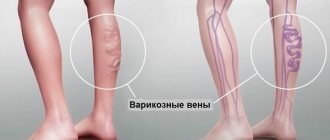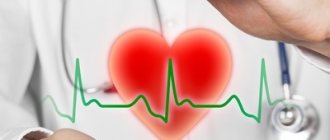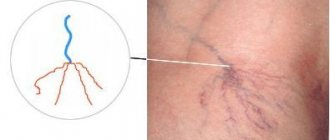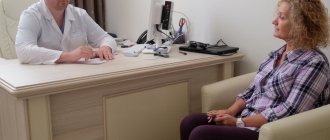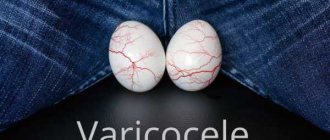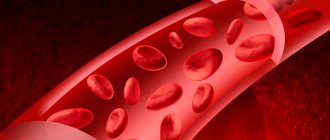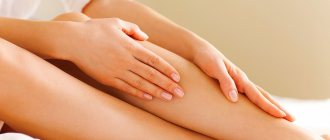Why does the vein in my leg burn?
It is difficult to answer the question why a vein in the leg burns if you do not know the person’s anamnesis (life history and illness). Therefore, before the doctor begins instrumental studies, he is sure to ask whether there were any prerequisites for the development of such a complaint as a burning vein in the leg.
The following may be considered prerequisites:
- Varicose veins in close relatives;
- Complaints of pain, heaviness and fatigue in the legs, which manifest themselves especially clearly in the evening and after static load;
- Green veins on legs;
- History of vein blockage;
- Spider veins on the skin of the legs.
If a person has the above symptoms, then it is highly likely that he suffers from varicose veins of the lower extremities. If there is a symptom such as a burning vein in the leg, the doctor may assume the development of complications of varicose veins: thrombophlebitis and deep vessel thrombosis.
These dangerous conditions develop when a blood clot forms in the lumen of blood vessels. The difference between them is where exactly the thrombus is localized: if in the superficial venous system it is thrombophlebitis, in the deep venous system it is thrombosis.
Causes
The main cause of varicose veins is disruption of stable blood flow. It is the stagnation of blood in the veins that leads to pressure exerted on them. Therefore, the primary factors influencing the development of varicose veins include:
- Genetic predisposition. If both parents suffered from varicose veins, then the probability of their child developing the disease can reach 70%. The first symptoms of the disease appear at an early age, and the development of the disease can be completely avoided by taking good care of your health.
- Increased physical activity. Regular and prolonged standing can lead to overstrain of blood vessels. Therefore, varicose veins are often found in professional athletes and in people who are exposed to heavy physical work.
- Lack of physical activity. With a complete lack of movement in the blood vessels, blood stagnation occurs. Elderly people, as well as office workers who lead a sedentary or sedentary lifestyle, may suffer from varicose veins.
- Hormonal disbalance. Functional disorders of the hormonal or endocrine system of the human body can lead to various consequences. For example, female representatives face stagnation of blood in the vessels. Hormonal disruptions can occur during puberty, pregnancy, lactation, menopause, as well as due to private stressful situations and nervous disorders. During such periods, it is not estrogen that predominates in women’s bodies, but the hormone of the corpus luteum, which has a relaxing effect on the muscles.
- Mechanical effect on veins. Contraction of peripheral veins located on the surface of the extremities can also affect the appearance of blood stagnation. For example, tight, tight clothing has this effect.
- Alcohol abuse. Alcohol contains substances that are toxic and poisonous to the body, and also increases blood pressure. Toxins and pressure cause the walls of blood vessels to lose elasticity and tone.
- Obesity. Excessive consumption of food leads to rapid weight gain, as a result of which the limbs of the body may not tolerate the load placed on them.
When the veins hurt in the legs, the cause of the pain is usually varicose veins. You should pay attention to factors that could influence the development of the disease and reconsider your lifestyle.
Pathogenesis of varicose veins on the legs
Who should you turn to when a vein in your leg burns?
Thrombophlebitis and deep vein thrombosis require immediate medical attention. Moreover, the sooner qualified assistance is provided, the higher the chance that only conservative therapy will be required. Therefore, if you feel that a vein in your leg is burning and in addition to this, the symptoms described below appear, then immediately consult a phlebologist.
- Redness of the leg, especially pronounced along the location of the vessel;
- Local increase in skin temperature of the leg;
- Sharp or nagging pain in the leg that prevents you from walking independently;
- Severe swelling of the leg.
Angiologists and phlebologists use blood-thinning drugs—anticoagulants and antiplatelet agents—to treat these complications of varicose veins.
A vein burning in the leg: is it dangerous?
In order to determine why the vessel on the leg is burning, a phlebologist needs additional examination. The doctor, after performing Dopplerography of the vessels of the legs (it allows you to evaluate blood flow), confirms or rejects the diagnosis of thrombophlebitis and thrombosis.
If there is a thrombus in the lumen of the vessel, it will be visible on the monitor screen. It is important to determine the exact location of the thrombus. The risk of a blood clot breaking off from the vessel wall and blocking one of the vessels depends on this.
When a blood clot enters the pulmonary artery, pulmonary embolism develops. PE is a potentially life-threatening condition, since when blood circulation in the lungs is blocked, the entire body experiences oxygen starvation.
How to avoid conditions when a vein in the leg burns?
In order to avoid the sensation of a burning vein, you should follow the prevention of varicose veins of the lower extremities, which includes an active lifestyle, giving up bad habits and regular visits to a phlebologist. This is especially important for people at risk:
- For patients in the postoperative period (no matter what kind of operation was performed), it is not necessary to remain in bed for a long time. As soon as your doctor says you can walk, be sure to move. Immobilization leads to poor circulation and increases the risk of developing a blood clot in the veins.
- According to statistics, a huge number of women experience venous thrombosis and even thromboembolism during pregnancy. Pregnant women are advised to walk a lot in the fresh air, eat right and watch the kilograms they gain. It is advisable that your weight during pregnancy does not increase by more than 12 kg.
Do not ignore the appearance of pain and other symptoms of varicose veins. If treatment is started in a timely manner, thrombophlebitis and deep vein thrombosis do not occur.
Varicose veins - what is it and how to live with it?
As an advertisement
Varicose veins are a very common phenomenon. According to statistics, in Russia various forms of varicose veins occur in 30 million people. Women experience the disease more often than men1.
With varicose veins, the walls of blood vessels lose their elasticity and become thinner. The veins themselves become tortuous, and nodular protrusions appear under the skin. Due to the deformation of blood vessels, the venous outflow of blood is disrupted2.
Symptoms of varicose veins of the legs
With varicose veins, symptoms vary depending on the stage of the disease3.
I. At the initial stage
Varicose veins may not manifest themselves in any way, so diagnosing the disease is quite difficult. However, without treatment, over time, a feeling of heaviness and fullness in the legs, swelling, and calf cramps arise. Spider veins are added to the signs of varicose veins in women, but without accompanying symptoms it can simply be a cosmetic defect.
II. At the second stage
swelling and fatigue no longer go away after a night's rest. The skin on the legs may become less sensitive, dryness and flaking appear, sometimes reddish or dark spots, itching.
III. At the third stage
changes in veins and skin are visible to the naked eye. Venous vessels become swollen. There is constant pain in the legs, the skin in some places acquires a bluish tint. Patients are increasingly experiencing cramps in their calves. Systemic problems begin due to impaired blood flow, for example, headaches.
IV. At the last – fourth stage
manifestations of varicose veins progress. Trophic ulcers appear in places of inflammation on the skin. The risk of blood clots and thrombophlebitis – inflammation of the veins – increases.
Also, with varicose veins, the local temperature may increase. In the later stages, even minor bruises and wounds on the lower leg lead to minor hemorrhages4.
Why do varicose veins appear?
There are primary and secondary varicose veins5:
• primary varicose veins are caused by congenital, often hereditary, factors: insufficiency of the venous wall or valves that direct blood flow from the lower extremities to the heart;
• the development of the secondary form of varicose veins is influenced by a person’s lifestyle and occupation.
Representatives of professions with a static load are at greatest risk, when they have to sit or stand motionless for a long time, or lift heavy objects. These are, for example, surgeons, teachers, waiters. The disease is more likely to develop in obese people6.
Some causes of varicose veins apply only to women7:
• dyshormonal conditions, including those caused by taking hormonal contraception, replacement therapy;
• Pregnancy also increases the risk of the disease, but in most women, after childbirth, the veins return to a healthy state.
Is it possible to cure varicose veins?
Many changes in the veins are irreversible, so at the first signs of varicose veins you should consult a phlebologist. To make a diagnosis, a specialist will conduct an examination, perform hardware diagnostics and prescribe tests.
If the disease is severe, the main treatment will be surgical. Minimally invasive methods such as sclerotherapy or laser coagulation are possible8.
In the early stages of varicose veins, conservative treatment is sufficient, which may include:
• venotonics, improving blood flow and strengthening the walls of blood vessels. For example, Venolife duo® is a complex drug that helps strengthen capillaries and increase venous tone9;
• anticoagulants, which thin the blood and prevent blood clots from forming. Venolife® gel prevents blood clots, helps cope with swelling and pain in the legs, accelerates the healing of trophic ulcers10;
• anti-inflammatory drugs;
• compression underwear.
To prevent varicose veins, it is recommended to normalize weight, eat right and exercise. If you work sedentary or standing, you can wear compression socks or stockings.
THERE ARE CONTRAINDICATIONS. BEFORE USE, CONSULT A PROFESSIONAL.
Products by topic: [product](Venolife gel), [product](Venolife Duo).
1. Litynsky A.V., Polyakov P.I., Gorelik S.G. Modern problems of varicose veins of the lower extremities (epidemiology, diagnosis, treatment) and its features in people of older age groups // Scientific bulletins of Belgorod State University. Series: Medicine. Pharmacy. 2012. No. 5 (part 2). pp. 276-280.
2. Daudyaris J.P. Diseases of the veins and lymphatic system. // M.: “Medicine”, 1984. P. 59-97.
3. Ibid.
4. Petukhov V.I. The nature of functional disorders in patients with varicose veins and the possibilities of sclerotherapy // Bulletin of Vitebsk State Medical University. 2005. No. 2, volume 4. pp. 22-27.
5. Evdokimov A.G., Topolyansky V.D. Diseases of the arteries and veins: A reference guide for the practitioner. // 2nd ed. M.: Soviet sport, 2001. P. 182.
6. Clinical recommendations. Varicose veins of the lower extremities without chronic venous insufficiency // Ministry of Health of the Russian Federation.
7. Ibid.
8. Ibid.
9. Venolife Duo, instructions. // https://www.venolife.ru/instructionDuo.pdf
10. Venolife Gel, instructions. // https://www.venolife.ru/instructionGel.pdf
